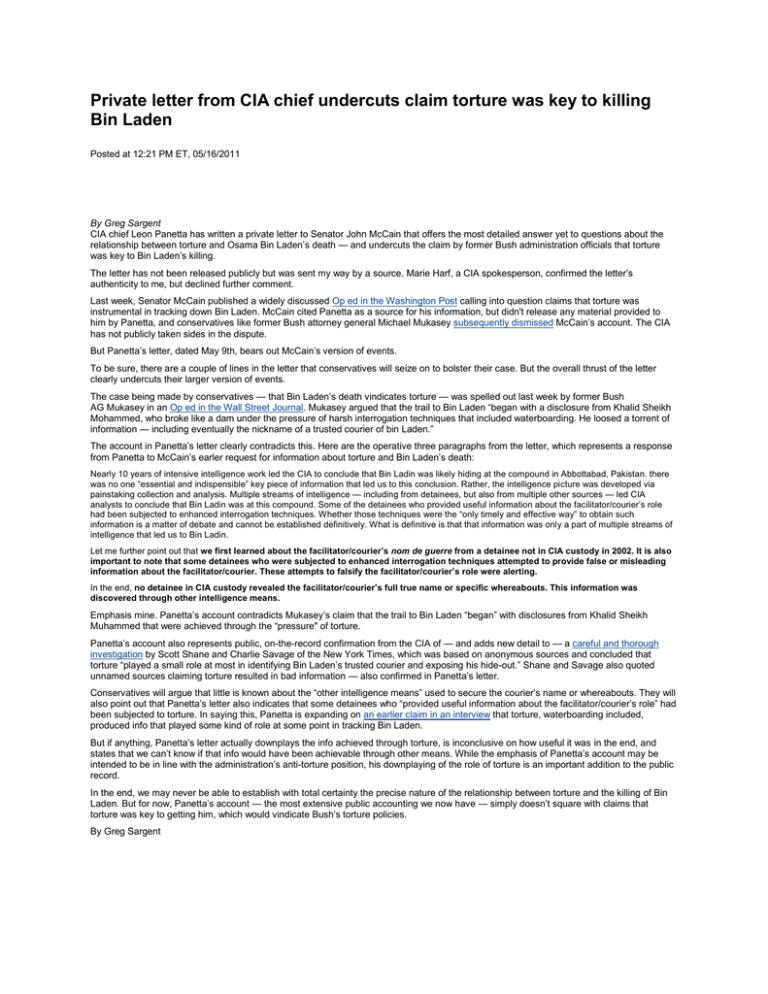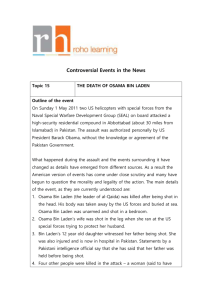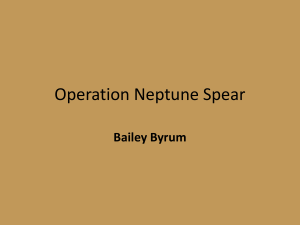Private letter from CIA chief undercuts claim torture was key... Bin Laden
advertisement

Private letter from CIA chief undercuts claim torture was key to killing Bin Laden Posted at 12:21 PM ET, 05/16/2011 By Greg Sargent CIA chief Leon Panetta has written a private letter to Senator John McCain that offers the most detailed answer yet to questions about the relationship between torture and Osama Bin Laden’s death — and undercuts the claim by former Bush administration officials that torture was key to Bin Laden’s killing. The letter has not been released publicly but was sent my way by a source. Marie Harf, a CIA spokesperson, confirmed the letter’s authenticity to me, but declined further comment. Last week, Senator McCain published a widely discussed Op ed in the Washington Post calling into question claims that torture was instrumental in tracking down Bin Laden. McCain cited Panetta as a source for his information, but didn't release any material provided to him by Panetta, and conservatives like former Bush attorney general Michael Mukasey subsequently dismissed McCain’s account. The CIA has not publicly taken sides in the dispute. But Panetta’s letter, dated May 9th, bears out McCain’s version of events. To be sure, there are a couple of lines in the letter that conservatives will seize on to bolster their case. But the overall thrust of the letter clearly undercuts their larger version of events. The case being made by conservatives — that Bin Laden’s death vindicates torture — was spelled out last week by former Bush AG Mukasey in an Op ed in the Wall Street Journal. Mukasey argued that the trail to Bin Laden “began with a disclosure from Khalid Sheikh Mohammed, who broke like a dam under the pressure of harsh interrogation techniques that included waterboarding. He loosed a torrent of information — including eventually the nickname of a trusted courier of bin Laden.” The account in Panetta’s letter clearly contradicts this. Here are the operative three paragraphs from the letter, which represents a response from Panetta to McCain’s earler request for information about torture and Bin Laden’s death: Nearly 10 years of intensive intelligence work led the CIA to conclude that Bin Ladin was likely hiding at the compound in Abbottabad, Pakistan. there was no one “essential and indispensible” key piece of information that led us to this conclusion. Rather, the intelligence picture was developed via painstaking collection and analysis. Multiple streams of intelligence — including from detainees, but also from multiple other sources — led CIA analysts to conclude that Bin Ladin was at this compound. Some of the detainees who provided useful information about the facilitator/courier’s role had been subjected to enhanced interrogation techniques. Whether those techniques were the “only timely and effective way” to obtain such information is a matter of debate and cannot be established definitively. What is definitive is that that information was only a part of multiple streams of intelligence that led us to Bin Ladin. Let me further point out that we first learned about the facilitator/courier’s nom de guerre from a detainee not in CIA custody in 2002. It is also important to note that some detainees who were subjected to enhanced interrogation techniques attempted to provide false or misleading information about the facilitator/courier. These attempts to falsify the facilitator/courier’s role were alerting. In the end, no detainee in CIA custody revealed the facilitator/courier’s full true name or specific whereabouts. This information was discovered through other intelligence means. Emphasis mine. Panetta’s account contradicts Mukasey’s claim that the trail to Bin Laden “began” with disclosures from Khalid Sheikh Muhammed that were achieved through the “pressure" of torture. Panetta’s account also represents public, on-the-record confirmation from the CIA of — and adds new detail to — a careful and thorough investigation by Scott Shane and Charlie Savage of the New York Times, which was based on anonymous sources and concluded that torture “played a small role at most in identifying Bin Laden’s trusted courier and exposing his hide-out.” Shane and Savage also quoted unnamed sources claiming torture resulted in bad information — also confirmed in Panetta’s letter. Conservatives will argue that little is known about the “other intelligence means” used to secure the courier’s name or whereabouts. They will also point out that Panetta’s letter also indicates that some detainees who “provided useful information about the facilitator/courier’s role” had been subjected to torture. In saying this, Panetta is expanding on an earlier claim in an interview that torture, waterboarding included, produced info that played some kind of role at some point in tracking Bin Laden. But if anything, Panetta’s letter actually downplays the info achieved through torture, is inconclusive on how useful it was in the end, and states that we can’t know if that info would have been achievable through other means. While the emphasis of Panetta’s account may be intended to be in line with the administration’s anti-torture position, his downplaying of the role of torture is an important addition to the public record. In the end, we may never be able to establish with total certainty the precise nature of the relationship between torture and the killing of Bin Laden. But for now, Panetta’s account — the most extensive public accounting we now have — simply doesn’t square with claims that torture was key to getting him, which would vindicate Bush’s torture policies. By Greg Sargent





